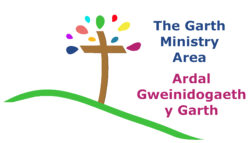In the early years (1912 up to the outbreak of WWI) our association records show three members at Radyr, and with no recorded peals it is reasonable to assume a call-change band existed. Edgar Lewis remembered occasional ringing during the period between the two wars, and no record of any peal or quarter peal having been rung has been found, apart from those rung by visiting bands. In 1950, William (Bill) Dare, a Whitchurch ringer who lived in Rhiwbina, attended a meeting of our Association at Aberdare, the minutes of which record a discussion on the possibility of restarting ringing at Radyr. Bill volunteered to contact the Rev. Stanley Pontin to offer his help to train a band of learners to the stage when they would be self-supporting. This he achieved and since then the bells have rung out for Sunday services. The strength of ringing at a tower lies not only with the ease with which the bells may be rung but also with its greatest resource: the number of ringers forming the band.
Through regular maintenance work, we act as de facto custodians of the installation to future-proof Christ Church bells as an easygoing ring. We replaced some ropes and all the sallies & rope tail-ends during 2007.
The basic rules and logic of change ringing have remained the same since 1640 when the principles were discovered. The patterns we ring at Radyr are the same in towers throughout the UK and beyond (change ringing is performed in Canada, the USA, Australia, New Zealand and South Africa). With the exception of St. Paul’s Cathedral, Westminster Abbey and York Minster, all towers welcome visiting ringers and this gives bellringing an added interest. Whilst the physical exercise of ringing a bell is good for dodgy backs and upper-body extension, we are told the mental gymnastics delay the onset of dementia.
